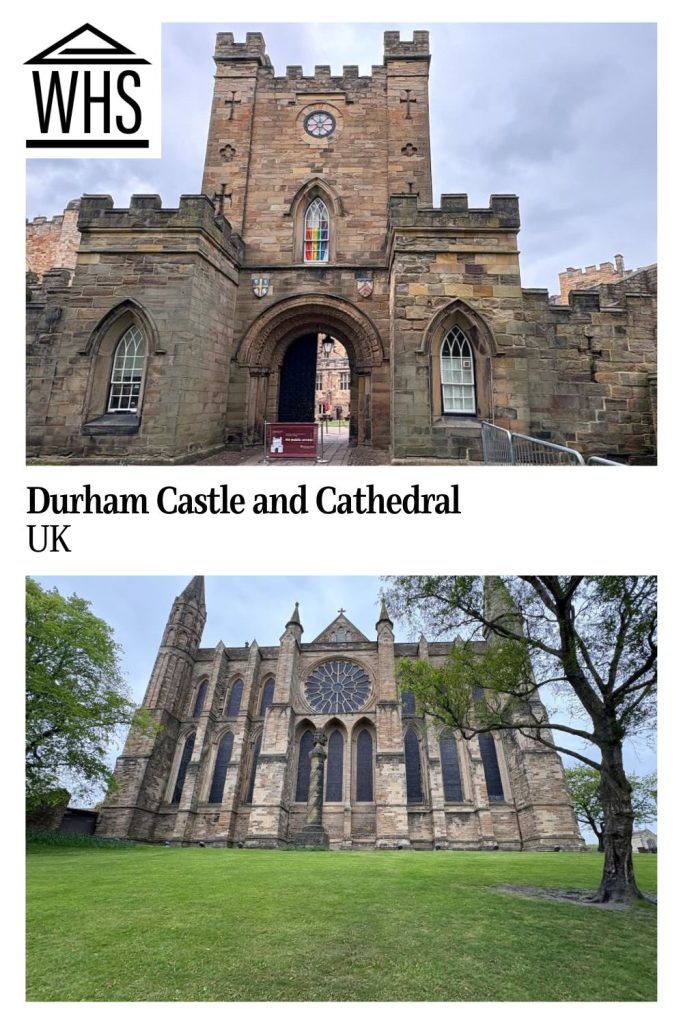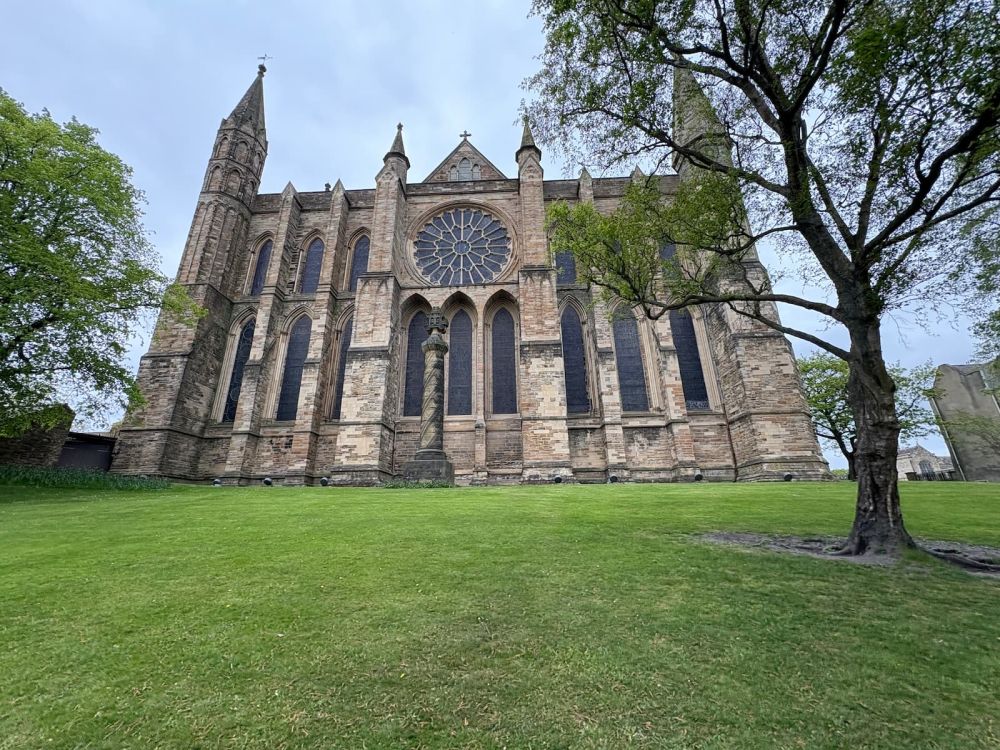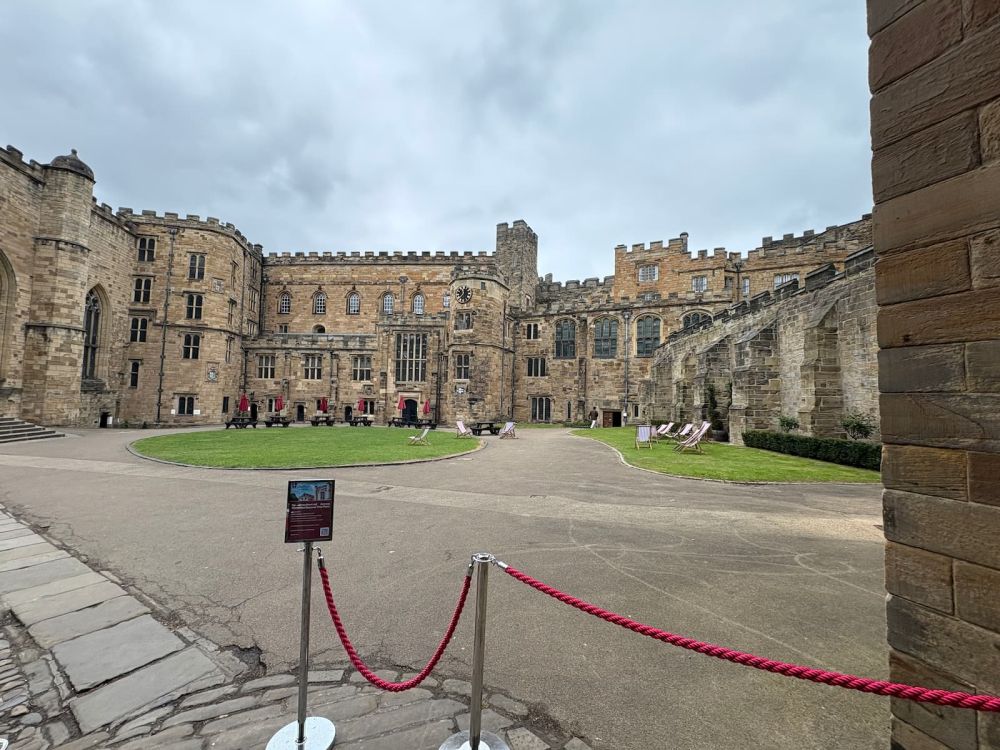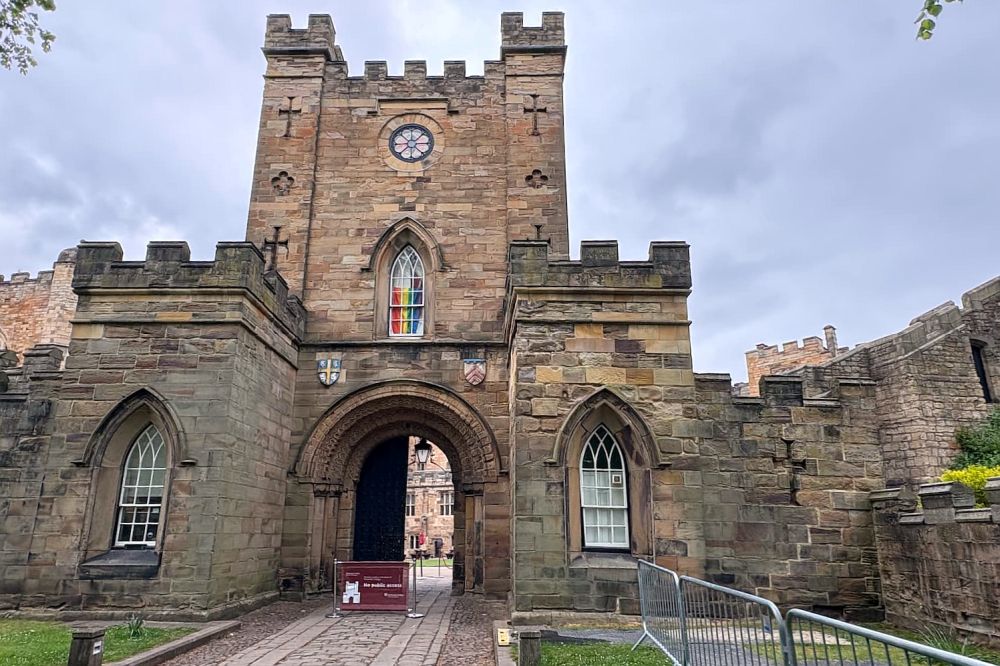Durham Castle and Cathedral
By Tom Henty
What are Durham Castle and Cathedral?
Durham Cathedral, in the north of England, was built in the 11th-12th century specifically to hold relics of Saint Cuthbert and the Venerable Bede, who died in the 7th and 8th centuries respectively. It also now contains relics of Saint Oswald as well.
The Cathedral is within the boundaries of Durham Castle, which dates to the 11th century, though some parts of the castle were added in later centuries. Both the castle and the cathedral are located on a hill in a sharp bend in the River Wear: a good defensive position.
There are also other important buildings nearby that contribute to the city’s unique character and historical significance, but that are not included in the official UNESCO site boundaries.

Disclosure: This article contains affiliate links. Making a purchase through an affiliate link will mean a small commission for this website. This will not affect your price. Privacy policy.
Why are Durham Castle and Cathedral a UNESCO site?
Durham Cathedral isn’t just another old building; it’s one of the best examples of Norman architecture in England. The cathedral site at Durham is still remembered as a pioneering achievement following its construction over 900 years ago, when it was way ahead of its time. According to UNESCO, “the innovative audacity of its vaulting foreshadowed Gothic architecture.” It is “a type of experimental model which was far ahead of its time.”
It offers outstanding universal value in terms of architecture, historical significance, and influence on later developments in European building styles: notably, Gothic.

The Normans marked the North of England with their distinct style through showcasing the Castle and Cathedral in Durham. However, they weren’t just for show. The Castle was home to the Prince Bishops, who were religious leaders with serious power, handpicked by the king to keep order up north. The impressive structure was built to defend the city and surrounding lands.
UNESCO gave the site World Heritage status in 1986 as a testament to these two timeless landmarks, which are still in use today and contribute towards the prestige of the University in Durham.
What can you expect on a visit to Durham’s UNESCO area?
When you arrive in Durham you can expect a wonderful day in a friendly city. Here is what you can look forward to:
Two landmarks – past and present: The cathedral is a masterpiece of Norman architecture, and the castle was an active fortress many centuries ago. Both buildings have played an important role in Durham for centuries, with both also having important modern-day uses. The castle is used for the university, and the cathedral is still an active place of worship, holding ceremonies and church services regularly.
A walkable UNESCO site: Once you arrive into the area of the UNESCO World Heritage Site, you are free to walk around and explore. There is a unique feeling as you walk between the different buildings, with cobblestones, traditional buildings, and patches of grass. Summer months enhance the experience as nature is blooming and the skies are blue. There is definitely a medieval vibe in certain parts of the castle and cathedral also.

A charming and quaint city centre: Durham is a university town, and independent bookshops, cafés, and restaurants are located just a few minutes’ walk away, which all contribute towards the charm of the city centre. Many visitors will spend all day in Durham and break up their exploration with lunch or a nice coffee stop.
Some beautiful scenery with stunning aesthetics: Durham Cathedral is perched high up overlooking the city and River Wear, which is also home to some very picturesque scenery. So depending on which time of the year you visit, you will likely capture some very beautiful aesthetics. Autumn brings a colourful backdrop to the area, with the occasional winter day covering Durham and its UNESCO area in white snow, creating a postcard-worthy setting.
Is Durham worth visiting?
Durham is an underrated destination for visitors to the UK, often overlooked due to its location in the northeast of the country. However, the city offers some stunning scenery, boutique shops and cafes, and a laid-back atmosphere which northern cities are famous for, due to the very welcoming locals.
As well as the UNESCO site in Durham, there are nearby attractions which offer insights into the proud history of the region. One is Beamish, the Living Museum of the North, an open-air museum where you can step back in time and experience everyday life in the 19th and early 20th centuries.
You can book accommodations in Durham here, or use the map below to find accommodations near the castle and cathedral:
What sort of travelers would like Durham’s UNESCO area?
Durham’s UNESCO site appeals to many different tourists. The historical background of the area appeals to many, as does its cultural significance for the region. You will also see couples, families, and school trips enjoying the World Heritage Site, especially in warmer months.
Tips for visiting Durham Castle and Cathedral
Durham is a very walkable city, with most of its key attractions located within a compact, historic centre. The UNESCO World Heritage Site, with Durham Cathedral and Castle at its heart, sits on a striking little peninsula. It is really easy to explore on foot.
The UNESCO sites are right in the centre, close to many cafes, restaurants and shops, so you can enjoy refreshments after your visit.
Tickets for Durham Castle and Cathedral: Durham Cathedral doesn’t charge an official entrance fee. However, every visitor is encouraged to make a donation towards the building’s conservation efforts. Durham Castle is £5 per adult visitor, with children under 16 gaining free entry.

The best time to visit Durham: The climate in the northeast of England is predominantly wet and cold for eight months a year. Although you can still visit at this time, it isn’t very fun. An ideal time to visit is between the months of May and September, when it is a nicer experience to walk around outside in the picturesque setting by the River Wear. Christmas also offers a pretty setting with lights and festivities creating a welcoming atmosphere in the centre of the city.
Tours including Durham Castle and Cathedral: Durham History Tours are available to book if you want to learn about the vast history of the city as you explore. A very knowledgeable local will take you around the highlights of the UNESCO site, teaching you the history and lesser-known secrets. These are the main points of interest which official tours cover: Durham Marketplace, Durham Castle, Palace Green (part of the castle), and Durham Cathedral. Another option is the Dark Durham Tour: an evening walk emphasizing the darker side of the history.
If you are passing through Durham on your way up to Scotland, don’t miss Edinburgh, another atmospheric UNESCO-listed city. To the south of Durham is Studley Royal Park, also a UNESCO site, and to the west is the English Lake District.
Where is Durham?
Durham is located in the northeast of England, around 20 miles (32 km) south of Newcastle, meaning it is easily accessible. Newcastle is the nearest airport, with incoming flights from all over Europe. Rent a car if you’re planning to travel to other parts of the UK or Scotland as well.
Another option is the train: Durham is located on the main train line between London and Scotland. This has opened up the opportunity for day trips to the historic city from all over the country. At this link to Omio, you can book your train tickets ahead of time.
For more information about Durham Castle and Cathedral, including the different sites’ opening hours and admission costs, see its official website.
Have you been to Durham Castle and Cathedral? If so, do you have any additional information or advice about this UNESCO World Heritage site? Please add your comments below!


I”m a Canadian who lived in Durham for a year for University. I can’t recommend it enough. It is one of the most beautiful cities I’ve ever had the pleasure of spending time in. Between the cobble stone roads and the river Wear, it is not to be missed..
Thanks for commenting! I agree!